M Williams Crew – Assigned 754th Squadron – April 1944

Standing: William Clark – B, Martin Williams – P, John Daly – N, Lyman Call – CP
Kneeling: Charles Leonard – E, Robert Morin – BTG/2E, John Epley – NTG, Gary Tabowitz – TTG, David Foley – RO, Aaron Greenspan – TG
(Photo: Richard Morin / ID’s: Barry Williams)
Crew Status – Various
| Rank | Name | Serial # | Pos | Date | Status | Comments |
|---|---|---|---|---|---|---|
| 2Lt | Martin D Williams | Pilot | Apr-44 | RFS | Removed from Flying Status | |
| 1Lt | Lyman W Call | 0697475 | Co-pilot | Dec-44 | CT | Trsf to 70CP for return to ZI - Tour complete |
| 1Lt | John E Daly | 0702383 | Navigator | Dec-44 | CT | Trsf to 70CP for return to ZI - Tour complete |
| 1Lt | William W Clark | 0696213 | Bombardier | Aug-44 | CT | Awards - Distinguished Flying Cross |
| T/Sgt | David J Foley, Jr | 11116991 | Radio Operator | Oct-44 | CT | Awards - Distinguished Flying Cross |
| S/Sgt | Charles A Leonard, Jr | 11094982 | Flight Engineer | 23-May-44 | KIA | Mid air collision w/351BG B-17 |
| S/Sgt | John O Epley | Nose Turret Gunner | Aug-44 | CT | Awards - Distinguished Flying Cross | |
| T/Sgt | Gary Tabowitz | 35277756 | Top Turret Gunner | Aug-44 | CT | Awards - Distinguished Flying Cross |
| S/Sgt | Robert N J Morin | 11023075 | Ball Turret Gunner | 11-May-44 | INT | Interned with Goldsmith Crew (#55) |
| S/Sgt | Aaron Greenspan | Tail Turret Gunner | Aug-44 | CT | Awards - Distinguished Flying Cross |
2Lt Martin D. Williams and crew came to the 458th in April 1944, an early replacement crew to the 754th Squadron. According to the notes of gunner S/Sgt Robert N.J. Morin, Martin flew four combat missions prior to becoming ill and coming off combat status. However, there is currently no documentation to support this in the group or squadron records, as Martin’s name does not appear on any formation plans or available mission lists. A photo sent in by a relative shows him pictured with B-24J-130-CO 42-110081 Able Mabel in the 93BG. Whether he was reassigned to Hardwick after arriving at Horsham is unknown.
After Martin was removed from combat, the rest of the crew appear to have been distributed amongst other 754th crews who were short a man or two. S/Sgt Morin was assigned to the crew of 1Lt Stuart Goldsmith, flying his first mission on May 5th, but the crew was forced to abort due to rudder control problems. On May 11th, Morin again flew with Goldsmith and crew. On this occasion they were forced to leave the formation near the target and seek refuge in Switzerland. The crew bailed out after crossing the Swiss border and were all rounded up in short order and interned.
On May 23, 1944 S/Sgt Charles A. Leonard was slated to fly with the crew of 1Lt Kenneth C. Barton. After the group had assembled and was making a turn to join the bomber stream, the 458th formation encountered a formation of B-17’s from the 351st Bombardment Group. Flying at right angles to each other, Barton’s Liberator was hid amidships by a Flying Fortress. The B-24 was cut in half spilling men and equipment. There were no survivors from Barton’s crew and only three from the B-17.
Lt Lyman W. Call flew several missions as co-pilot, including two on D-Day with Lt Frank L. Vermieren, although their second mission on this date was an abortive attempt. On June 10, 1944 Call was transferred to the 44th Bomb Group with Frank Vermieren and the rest of his crew. It is interesting to note that Call had evidently taken the place of 2Lt Andrew Cote, Vermieren’s co-pilot, who had been lost with the Goldsmith crew (and S/Sgt Morin) on May 11th. Not much is known of their duties while at the 44th, but they returned to Horsham in mid September and in October were transferred into the 752nd Squadron where they completed their tour in November 1944.
Most of the other crewmen are known to have filled in on several crews throughout their time in the group, and most of them completed their combat flying during the latter months of 1944.
S/Sgt Robert N.J. Morin
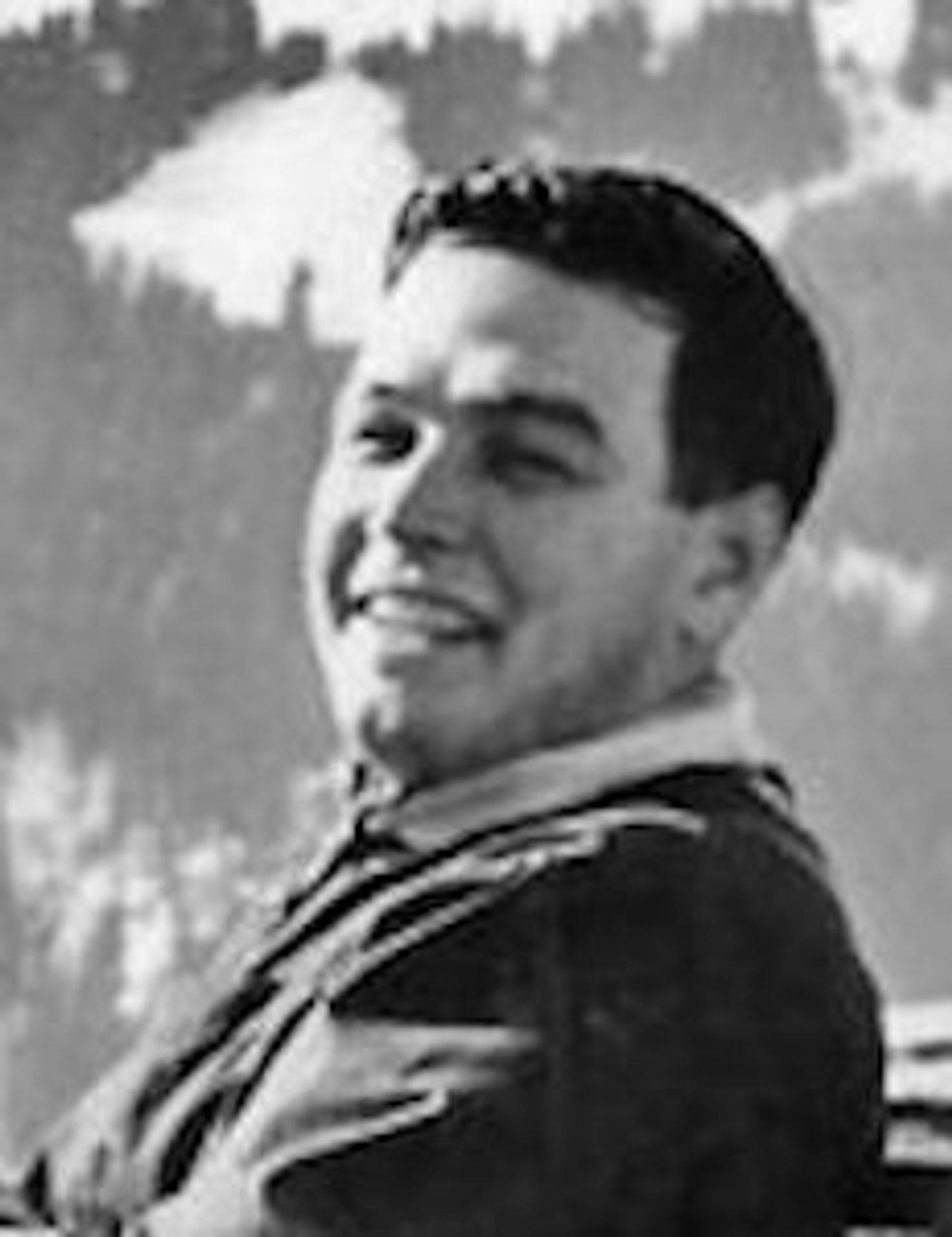
Service History of Robert N. Morin
Enlisted in Armed Forces (US Army Air Corps) on May 12, 1941 Portland, Maine
Basic Training at Westover Field Chicopee Falls, MA
Assigned to 79th Bomb Sqdn. 45th Bomb Group Grenier Field, Manchester, NH
Oct. 1941 Aircraft Mechanics School, Rising Sun School of Aeronautics, Philadelphia, PA
Graduated on Feb. 3rd 1942. Promoted to the rank of Corporal
Returned to Grenier Field with Anti-Submarine Sqdn.
March 1942 left Grenier Field relocated to Langley Field, VA.
May 1942 left Langley Field and relocated to Cherry Point, NC
Flying in DB-7 British Version of A-20 Havoc
August 1942 relocated to Las Vegas, NV for Aerial Gunnery School
Graduated from Gunnery School on Aug. 31st 1942
Promoted to rank of Staff Sgt
Returned to Cherry Point, NC and relocated to Miami, FL.
Now flying B-34 “Lexington” Aircraft Crew Chief
1943 stationed at Cuba, Ascension Island, group received B-24 to replace B-34 (right)
Sub Patrol in B-24, stationed in Trinidad, Suriname, Belen
Sept. 1943 returned to Miami, FL.
Oct. 1943 relocated to Pueblo, CO.
Dec. 4th 1943 relocated to Bruning, Nebraska
Transferred to 487th Bomb Group Almagordo, NM
Jan. 1st 1944 at 19th Tow Target Sqdn. Biggs Field, El Paso, TX
Feb. 15th reported to 460th School Sqdn. Biggs Field, TX
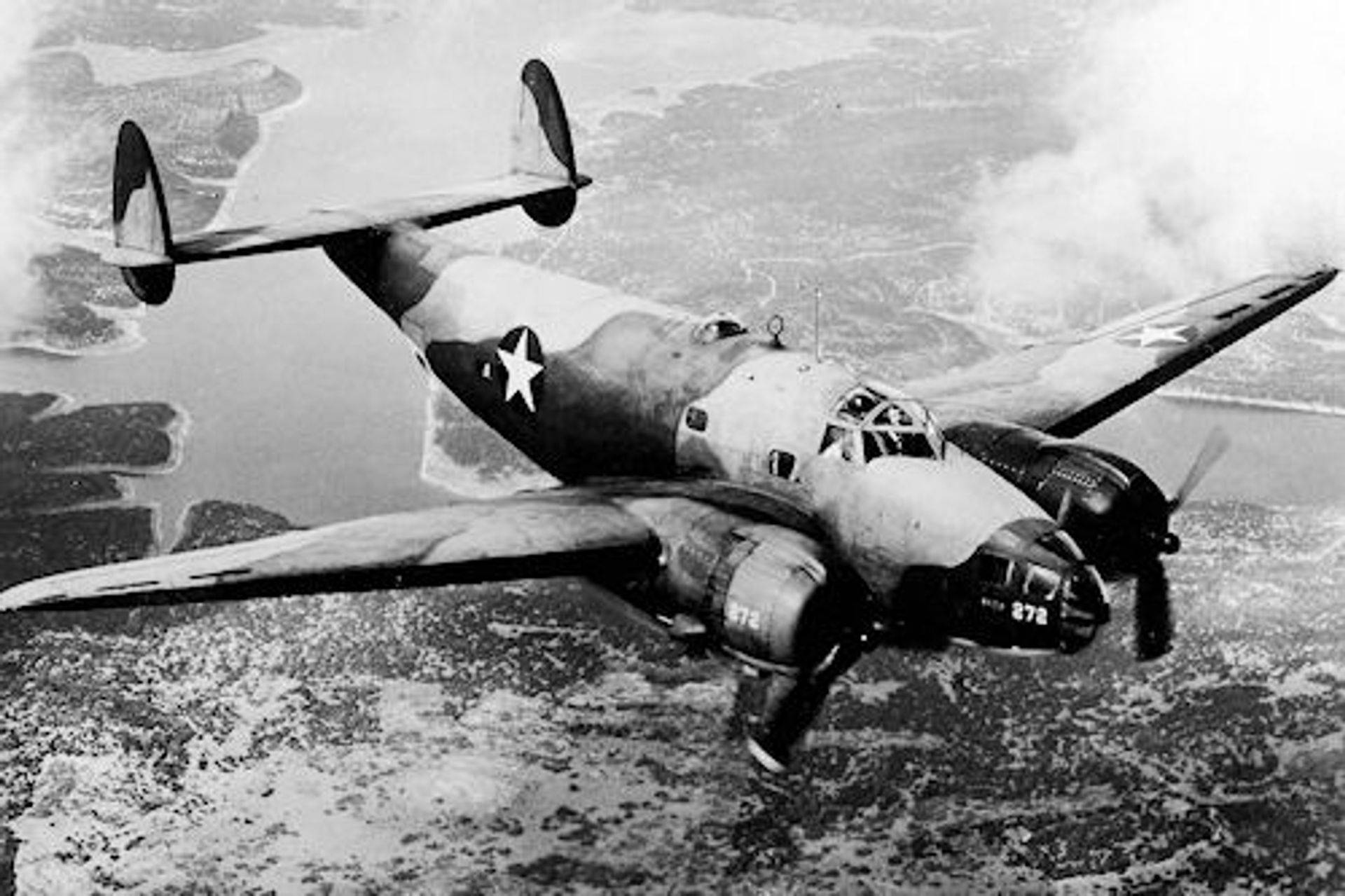
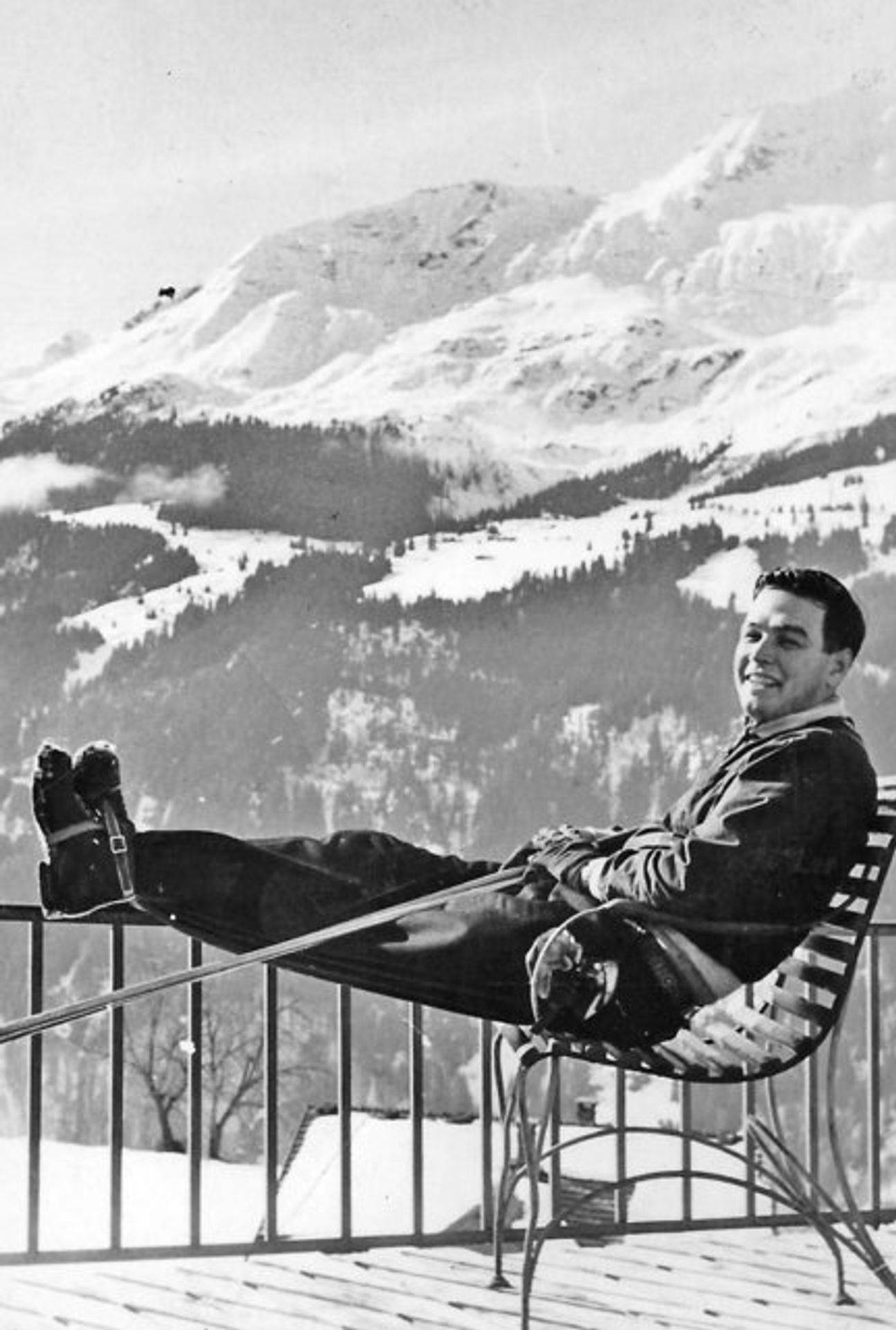
March 6th 1944 flew with new crew to Morrison Field, FL.
Flew new aircraft Southern Route to Wales UK
Sent to Northern Ireland for Ball Turret School
Turned over new aircraft to seasoned crew
April 1944 assigned to 754th B. Sqdn. 458th Bomb. Group
Assigned to Goldsmith’s crew day before May 11th target of Epinal, FR
Met crew at 4:30 am on May 11th waiting under wing for fog to clear
At Left: Robert Morin relaxing in the Swiss Alps during his Internment
(Photos and information courtesy: Richard Morin)
May 27, 1944

DESCRIPTION OF ACCIDENT
On the morning of 27 May 1944 at 0520, Lt LYMAN W. CALL was marshalling A/C B-24 H, 42-95120, when he had a taxiing accident which caused major damage to the airplane’s Bomb-bay and under the nose section fuselage. This took place at AAF 123.
LT CALL was taxiing A/C with engines #1 and #4. He had the electric auxiliary hydraulic pump on. After approximately one half mile of taxiing in which he had hydraulic pressure, he gave the airplane enough power to roll up a slight hill. At the crest of the hill the perimeter track made a turn to the right where four marshaled A/C were already parked on the perimeter track. At this point Lt CALL discovered there was no brake pressure available although he applied maximum brake effort. With throttles full closed he let the airplane roll straight off the perimeter track to avoid hitting the other A/C. With a heavy bomb load, A/C gathered momentum as it rolled down hill 100 yards into a fence, road ditch, and two three foot hill embankments, on both sides of road. No one was hurt but the A/C under fuselage and nose gear were seriously damaged.
Recommended that all taxiing of B-24s be done with #3 engine running.
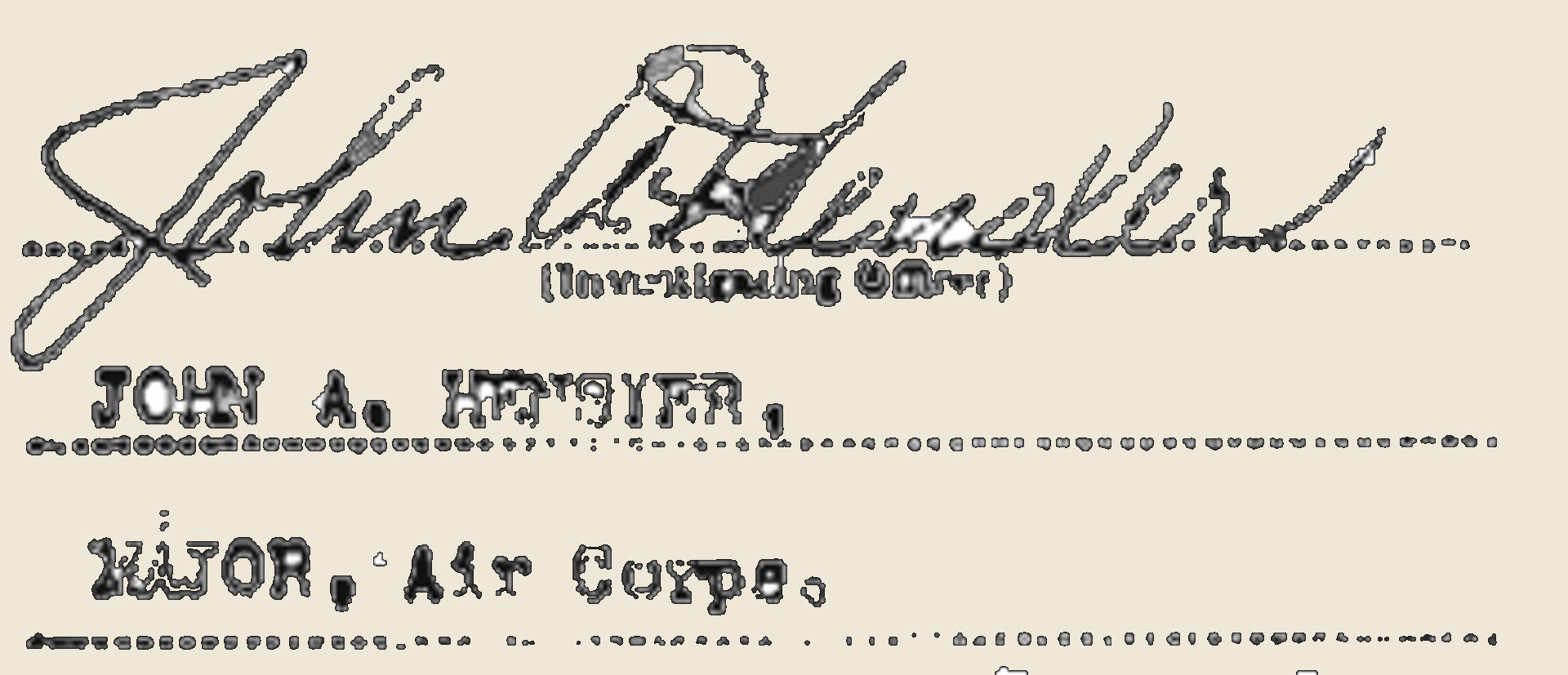
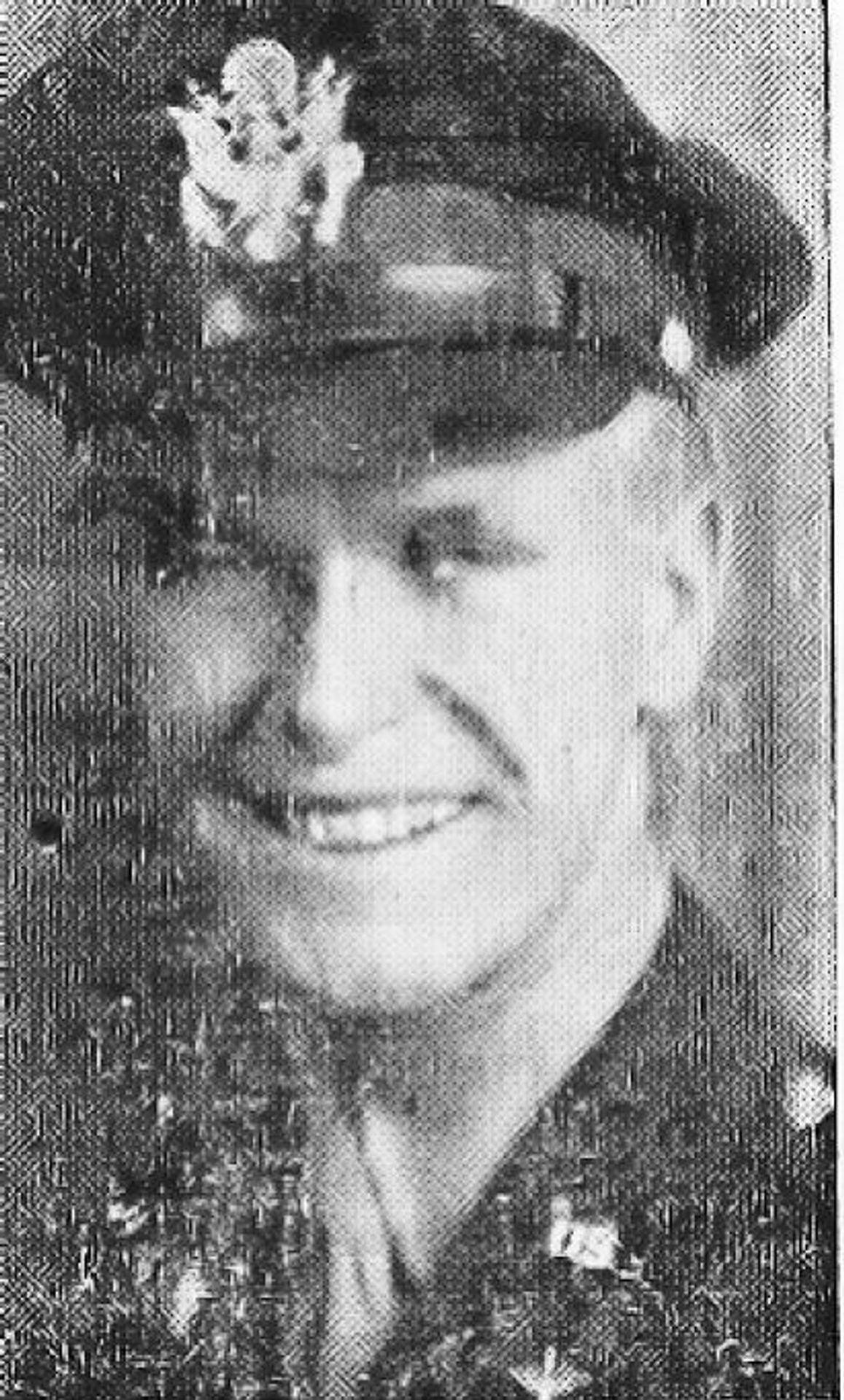
Statement of 2nd Lt. Lyman W. Call
Upon entering the plane I started #3 engine. I could not start #2 engine. I figured it was flooded so I cut the switch and had the crew chief pull the #2 prop through. I then attempted to start it two more times without success. I then started #1 & #4 engines. I tried #2 engine again, but it would not start so I cut #3 engine and instructed crew chief to put Auxiliary Hydraulic pump on.
I had taxied about ¼ mile, and was coming down a slight grade into the Marshalling area. I tried to apply brakes but they failed; I had brakes until this time and this was the first time I noticed I did not have brakes. I decided to go straight ahead to avoid hitting planes parked on the perimeter strip.

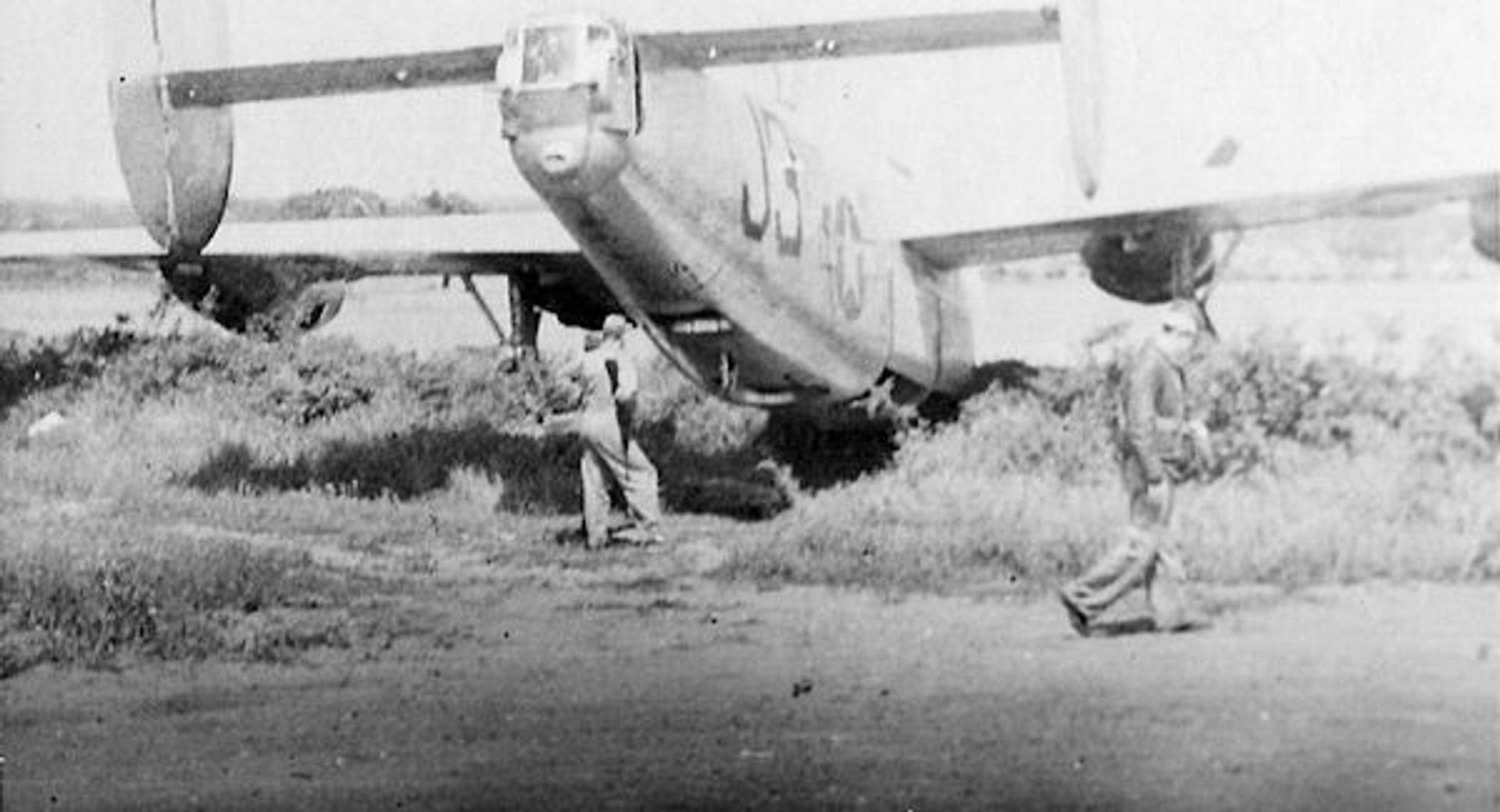
ACCIDENT STATEMENT
At approximately 0520 hours, 27 May 1944, B-24H “M” 120, being taxied by Lt. Call, failed to follow a turn in the perimeter track. The aircraft ran off the perimeter track over some open ground and came to a halt across the road leading to the village of Horsham St Faith.

Lt Martin D. Williams
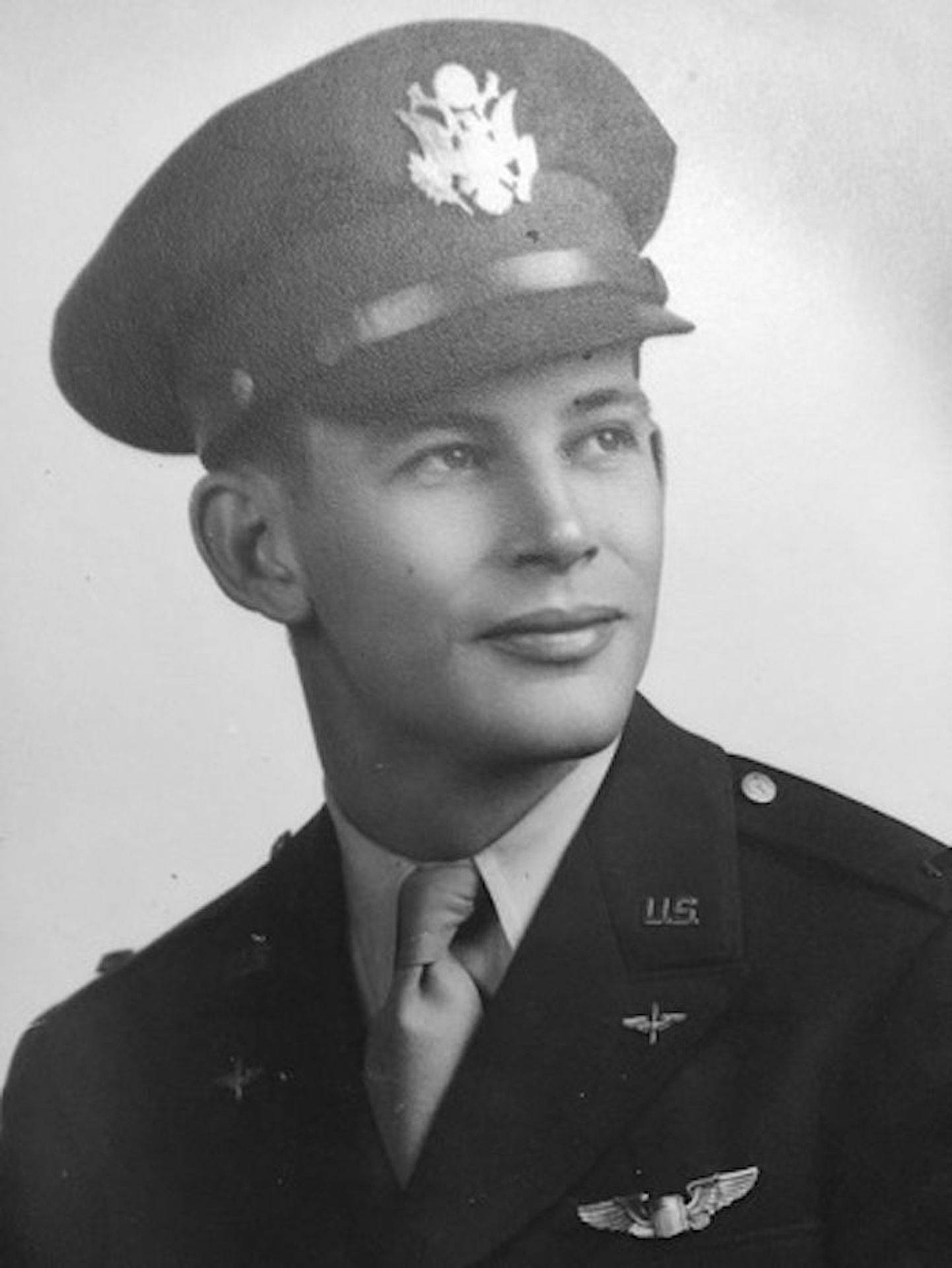

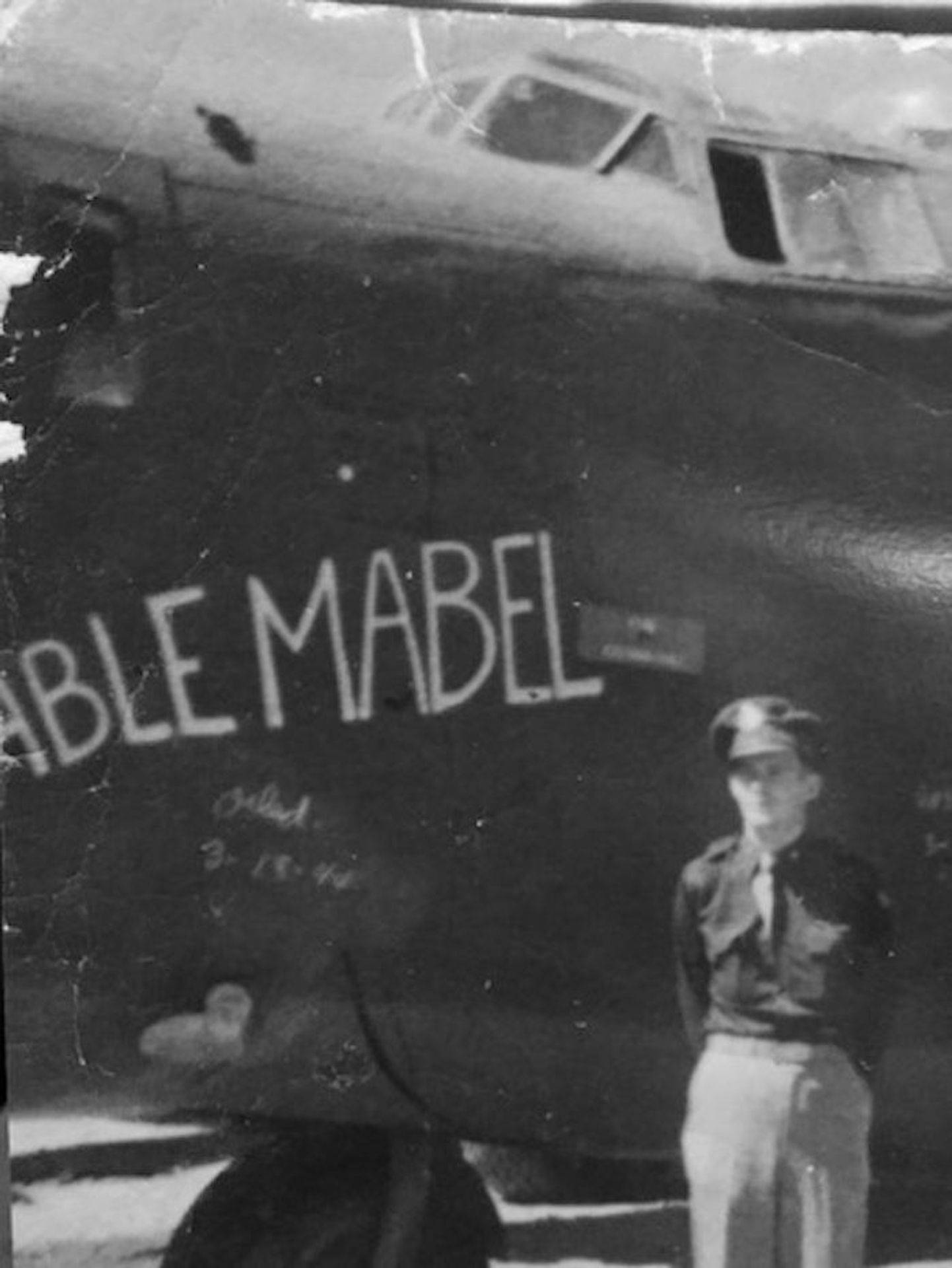
Martin Williams, possibly reassigned to the 93BG, in front of Able Mabel
(Photos: Ann Register)
